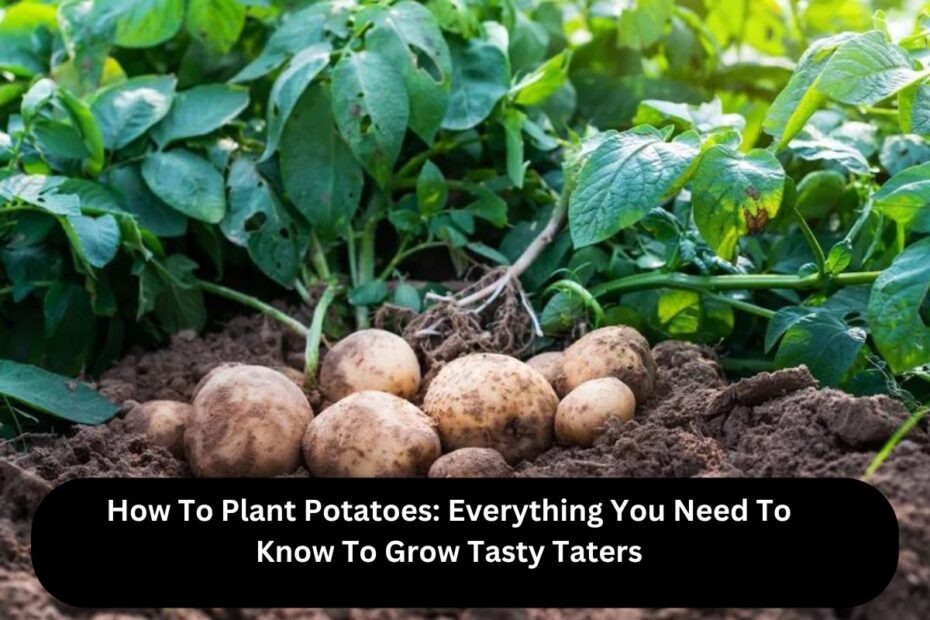Potatoes are a very useful root vegetable that can be grown in USDA zones 3 through 10. You can pick from 5,000 different types of potato plants in a wide range of sizes and colors. Because there are so many choices, growing potatoes is a popular crop for people who garden at home.
If you want to plant potatoes in your yard, this full guide will show you how to care for them and help them grow. Read on to find out how to grow potatoes.
1.Potato Plant Care
Potatoes grow best when the air is cool. To grow a good crop of potatoes—one of the world’s most important staple foods—you need to pay attention to the soil’s fertility, light, water, and temperature, as well as to pests and diseases.
2.Light
Potatoes need full sun to grow well. Having said that, in warm places, the afternoon sun can burn the leaves, and plants that don’t get much sun will probably be long and thin.
3.Water
It’s good for potatoes when the earth stays moist, but sometimes something is too good. Soil that is too wet can rot, so there is a thin line between how much water a potato plant needs and how little.
In general, potato plants need an extra inch of water every week, but this can change based on the weather.
4.Temperature & Humidity
Potatoes do best when the temperature is between 55 and 65 F (13 and 18 C) at night and between 65 and 80 F (18 and 27 C) during the day.
Even though they can handle small periods of very humid weather, this tuber doesn’t need to. That being said, your potatoes will be happy if the relative humidity is between 60 and 80%.
5.Soil
For some reason, potatoes need more manure than other plants because their roots are not very deep. Add some well-aged compost to the hole where you planted your potatoes to start feeding them right away. After that, a soil test will help you figure out when and how much fertilizer to use.
6.Problems, Pests & Diseases
Potatoes can get a lot of different bugs, diseases, and other problems. These are less likely to hurt potatoes that are healthy.Aphids, Colorado beetles, and flea beetles are just a few of the pests that are known to hurt potato fields.
Potato output can also be affected by diseases, most of the time fungal ones like early or late blight. Fungicides can be used to treat these, but it’s best to avoid them by using seeds that are disease-resistant or free of diseases, keeping the soil fertile, and watering plants properly.
Light damage to potatoes can cause problems like root greening. In the yard, cover the tubers with soil and store the potatoes in a cool, dark place after they are picked.
Changing the amount of water that plants get can cause roots to have odd shapes or skins that are dry and cracked. Put mulch around the plants to keep the water in.
7.How to Plant Potatoes
Before you put seed potatoes, the soil should be at least 55 F (13 C) during the day and 45 F (7 C) at night. If the soil is too cold and wet, seeds will not grow on time or will break down. It’s important to prepare the bed for the potatoes.
Place pieces 10 to 12 inches (25 to 30 cm) apart and 4 inches (10 cm) deep in rows that are 30 to 36 inches (76 to 91 cm) apart.
For smaller fingerling potatoes, you can put them about 8 inches apart.
When the roots start to come up from the ground, mound the top of the plant or add 2 to 4 inches (5 to 10 cm) of soil or compost. This is to make sure that light doesn’t turn tubers green.
Use wood chips or straw as mulch around the plants to keep the soil wet, block light, and keep weeds from growing. Keep an eye on the hills and add more soil, compost, or organic mulch as needed to cover the potatoes as they grow.
8.Growing Potatoes in Containers
Pots are a good way to grow potatoes. Something like a pot, bucket, or the like can be used to hold potatoes. For every 5 gallon (19 kg) bucket, use two to three seed potatoes. You can grow them like you would in the ground, making sure to cover the tubers with dirt as they come up.
9.Harvesting
You can pick early potatoes in 10 to 12 weeks, as early as mid-June. Bigger potatoes are ready from late August to October.
Pick the potatoes when the vines fall off and lose their color. You can gently lift the tubers off the ground with a potato fork, or you can cut the plant down and collect the tubers.
You can eat them right away, or you can fix them to keep them for a longer time. Use or throw away any spuds that are broken right away.
If not, spread the tubers out in a single layer in a warm, dark, well-ventilated room for about 10 days to let the skins harden and any small cuts heal.
Before you store the tubers, brush off any dirt that’s on them; don’t wash them. Store your potatoes somewhere dark, cool, and about 32 to 40 F (0 to 4 C) with 95% humidity. Also, keep your potatoes at a higher 40–50 F (4–10 C) if you want to fry them.
10.Varieties
To name a few, there are Yukon golds, fingerlings, red potatoes, white potatoes, Adirondack blue potatoes, Bintje potatoes, waxy potatoes, Red Norland potatoes, Kennebec potatoes, Austrian Crescent potatoes, German butterball potatoes, and Russian banana potatoes.
Also See: Here’s Everything I’m Planting In My Fall Vegetable Garden – To Max Out Every Inch
